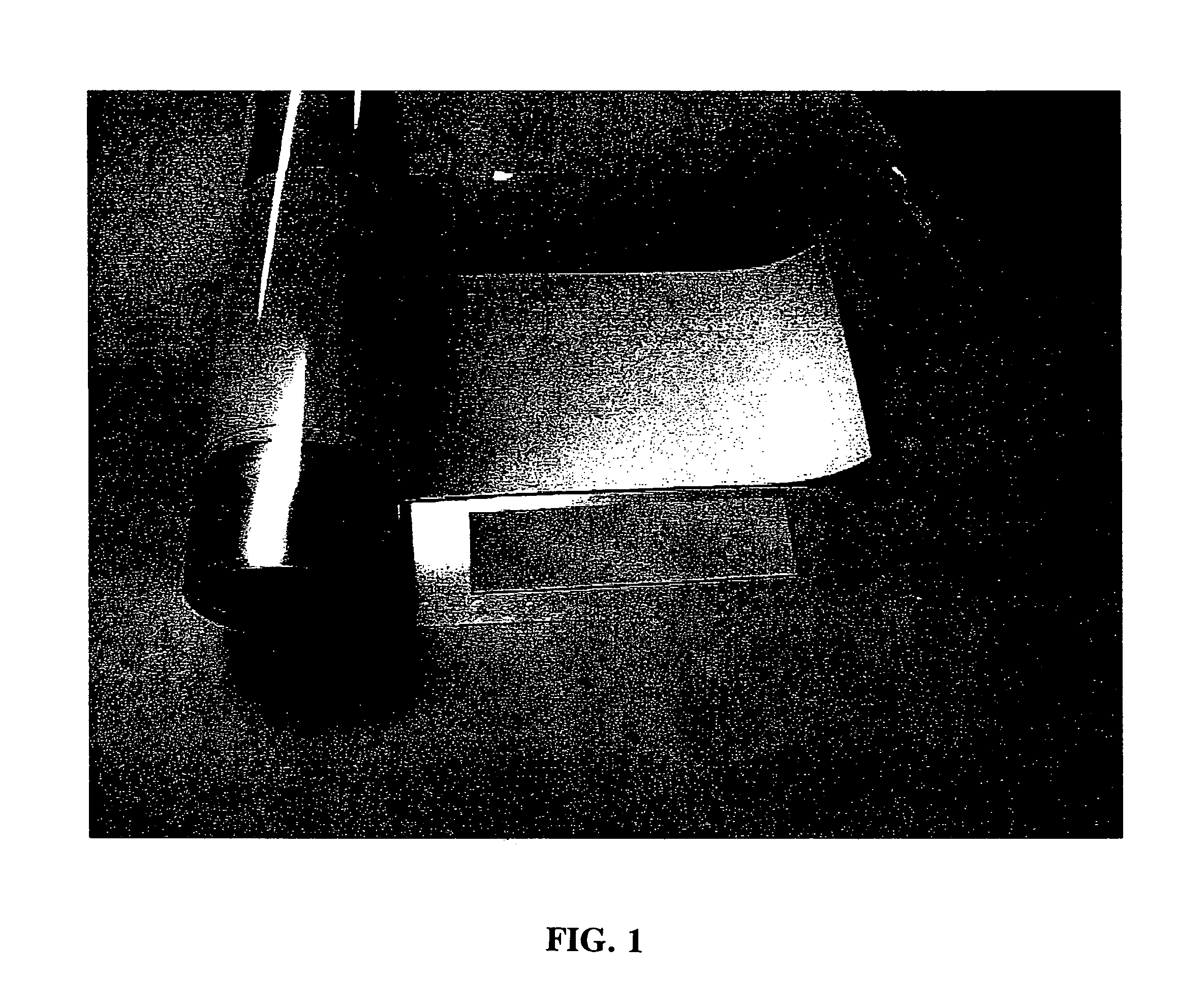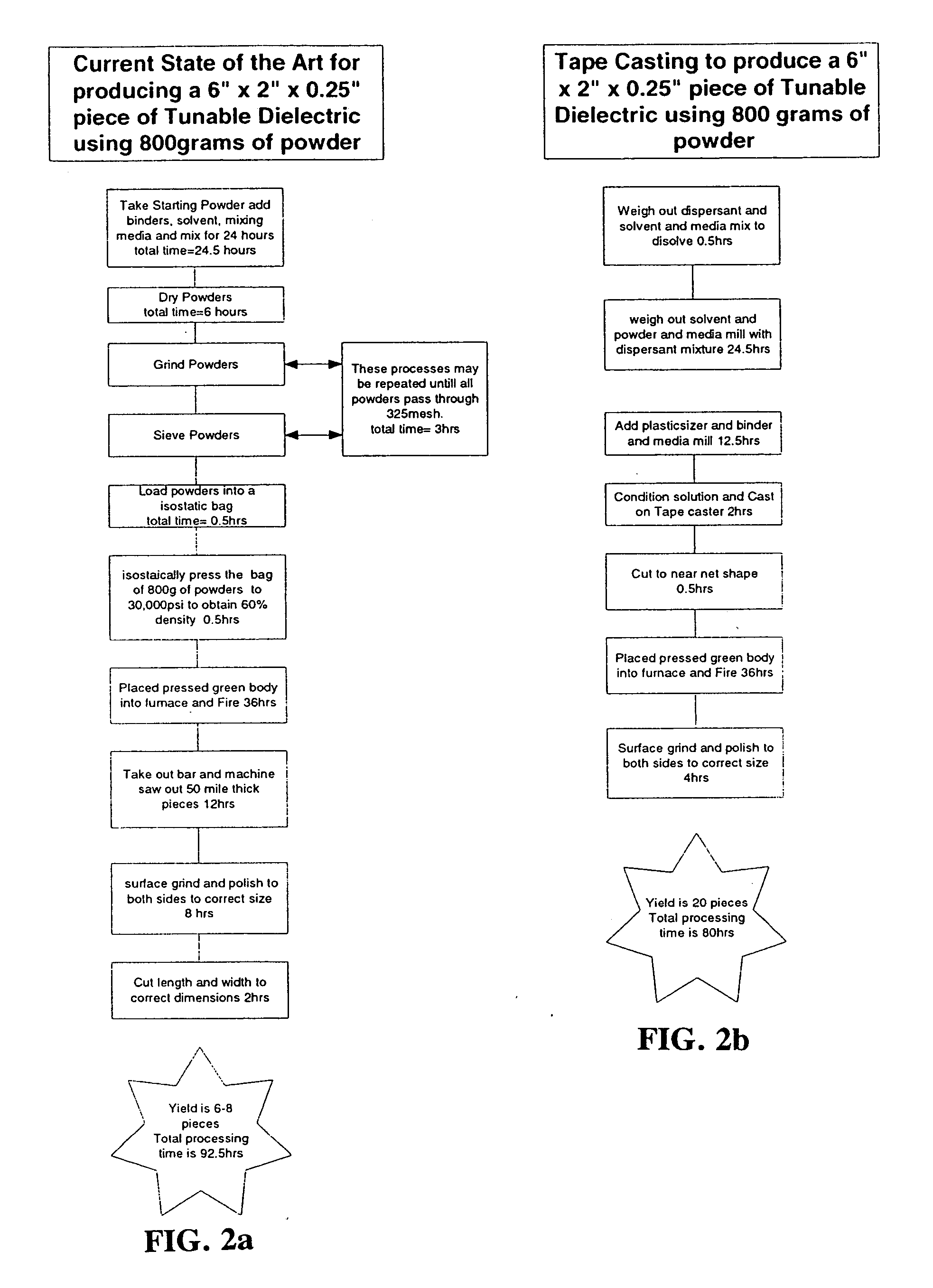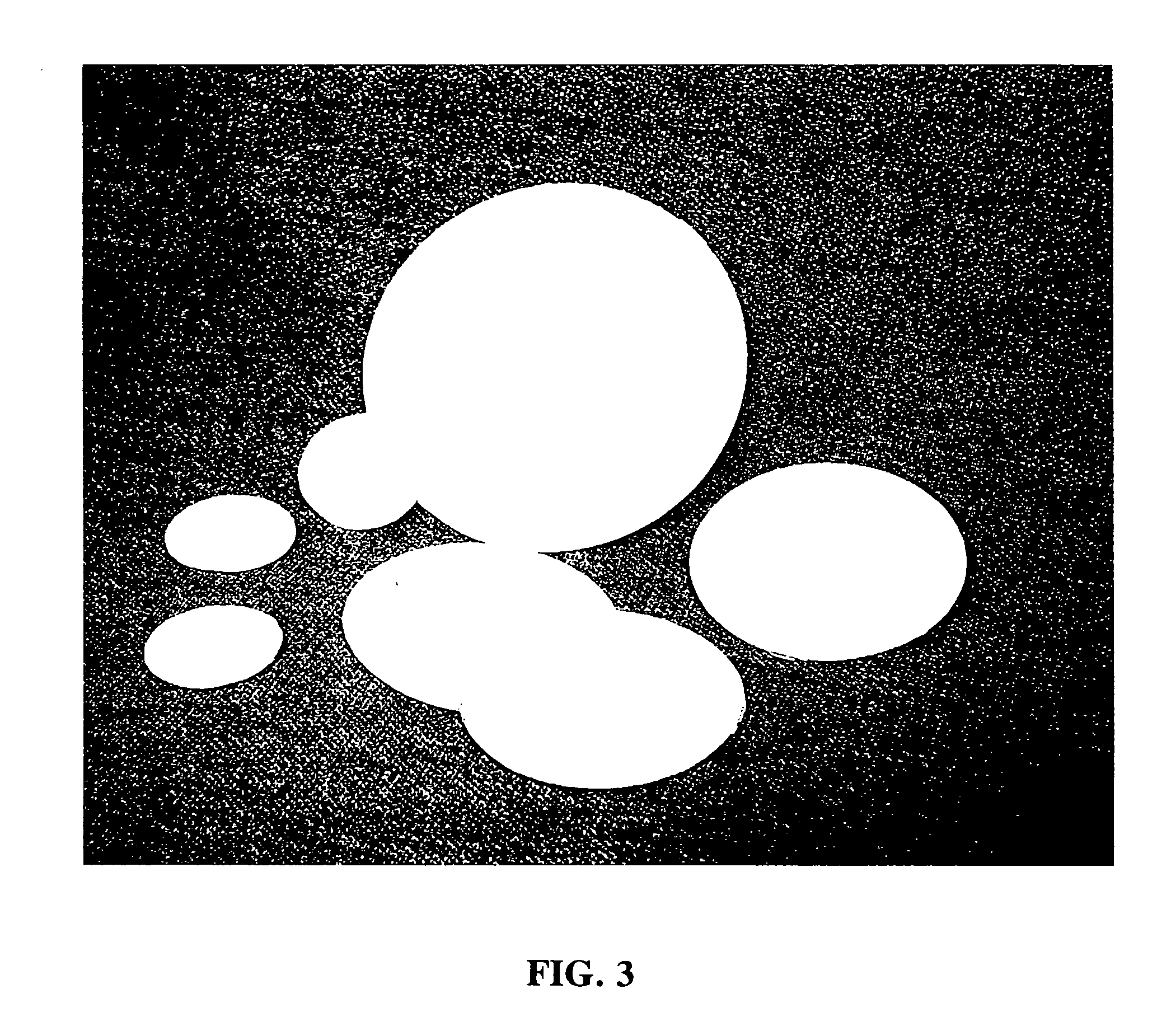Method for producing low-loss tunable ceramic composites with improved breakdown strengths
a technology of electronic tunable ceramics and composites, which is applied in the direction of fixed capacitors, natural mineral layered products, synthetic resin layered products, etc., can solve the problems of high cost, poor power handling characteristics, and high cost of conventional diode phase shifters, and achieve the effect of improving the breakdown strength
- Summary
- Abstract
- Description
- Claims
- Application Information
AI Technical Summary
Benefits of technology
Problems solved by technology
Method used
Image
Examples
example 1
[0060] Powder forms of BaTiO3 and SrTiO3 are mixed to form the desired stoichiometry. The powders are ball-milled in either a liquid solvent, deionized water or dry mixed with ceramic grinding media for approximately 24 hours. These powders are then allowed to dry. The mixed powder is then calcined to form BSTO. The calcined powder then undergoes another mixing step with the metal silicates, oxides, titanates, zirconates, niobates, tantalates, aluminates, stannates, titanates or combination of the above list in the correct ratios to form the composite. Again this mixing is performed in either a liquid medium or dry. During mixing binders may or may not be added. This composite powder is then dried and ground to a workable particle size. At this point the powder can be made into several different forms that can be characterized as bulk, thick film, or thin film.
[0061] Manhattan fish oil is dissolved in xylene solvent and added to a jar mill filled ⅓ with cylindrical grinding media. ...
example 2
[0077] A composite powder (40wt. % Ba 0.55 Sr 0.45 TiO3+60wt. % MgO) is combined with a commercially available tape cast binder system in a ratio that is determined based on particle size and particle surface area as shown in the following equation: Weight % Ceramic=1 / [(0.01)+{[1.0 / (18.5)(CSG)][{100 / 60-2(CSA-3))}−1]}], where: CSG=Ceramic Specific Gravity (g / cc); and CSA=Ceramic Surface Area in (m2 / g).
[0078] The incorporation of the binder system with the powder material is performed in an attritor mill at high speeds for approximately an hour. The mixture is then ready for tape casting.
example 3
[0079] Roll compacted tapes are cast to a thickness of 10 mils. The tapes contained about 13 weight percent binder. The slurry is cast onto a Mylar carrier sheet coated with a cross linked, UV cured silicone monomer. Other coatings such as Teflon or Aclar may be used. A doctor blade setting of 8 mils is used. The slurry is then allowed to air dry and the ceramic sheet is cut into near net shape pieces. The coated mylar backing is then peeled from the green tape. Cofired Pt electrodes are then screen printed on the green tapes by standard screen printing techniques. The stack is then arranged in a similar manner as shown in FIG. 4. A total of 18 pieces of tapes are laminated at a temperature of 140° F and a pressure of 1,000 psi. A finishing step of silver electrodes is printed on the surface of the stack by standard techniques. The fired stacks do not exhibit any warpage.
[0080] Roll compaction allows for decreased stresses in the material as it is being formed. The thickness can ra...
PUM
| Property | Measurement | Unit |
|---|---|---|
| thickness | aaaaa | aaaaa |
| thickness | aaaaa | aaaaa |
| thickness | aaaaa | aaaaa |
Abstract
Description
Claims
Application Information
 Login to View More
Login to View More - R&D
- Intellectual Property
- Life Sciences
- Materials
- Tech Scout
- Unparalleled Data Quality
- Higher Quality Content
- 60% Fewer Hallucinations
Browse by: Latest US Patents, China's latest patents, Technical Efficacy Thesaurus, Application Domain, Technology Topic, Popular Technical Reports.
© 2025 PatSnap. All rights reserved.Legal|Privacy policy|Modern Slavery Act Transparency Statement|Sitemap|About US| Contact US: help@patsnap.com



